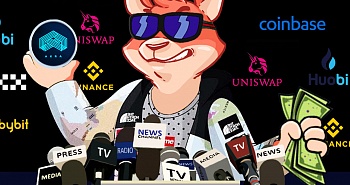Today, the most popular libraries for interacting with the Ethereum blockchain are Web3.js and Ethers.js. Each of them has its own advantages and disadvantages. Let's analyze what they are in more detail.
What is the Web3.js library
Web3.js was created by the non-profit organization Ethereum Foundation. It is a JavaScript source code library for Ethereum-based projects that allows developers to interact with the blockchain when creating dApps, decentralized applications. Web3.js also has functions for connecting to blockchain hosts using the JavaScript Object Notation protocol.
The library includes several modules:
- Web3.eth is designed to interact with the Ethereum network. It includes sub-modules: Web3.eth.subscribe, Web3.eth.contract, Web3.eth.accounts, Web3.eth.personal, etc.
- Web3.*.net refers to network sharing. It is also used as a submodule for interaction with Ethereum (Web3.eth.net).
- Web3.bzz is for communication with the swarm network.
- Web3.shh is for interaction with the Wisper protocol, used for decentralized messaging.
- Web3.utils provides service functions for Ethereum dApps and other Web3.js packages.
What is the Ethers.js library
Ethers.js, which is also a JavaScript-based library for Ethereum, has the same purpose of use which is to interact with the blockchain. Ethers.js offers an alternative, as you can already see by its set of modules:
- Ethers.Provider allows you to establish a connection with an Ethereum link. Ethers.js module changes the state of the setup.
- Ethers.Contract deals with deploying and interacting with smart contracts. The module contains functions that allow developers to track smart contract events (registration and indexing).
- Ethers.Utils is used to create decentralized applications after data formatting and user input processing.
- Ethers.Wallet provides a way to connect to any existing Ethereum wallet. This module also allows you to create new wallets and sign transactions.
How to determine which library is best
It's hard to say which library is the best. Web3.js was released earlier and is more popular, but Ethers.js has all the functions presented in Web3.js as well as some new features. There are other advantages: Ethers.js is fully licensed, has a very small size, 77 KB, and is under active development.
Web3.js is still a good library, but according to developers, ecosystems have more potential when they have access to different tools with different functions and the possibility of competition.
The AKRA token connects to the site through both Web3.js and Ethers.js libraries, allowing for a wide range of functionality and effective interaction with the Ethereum blockchain.














